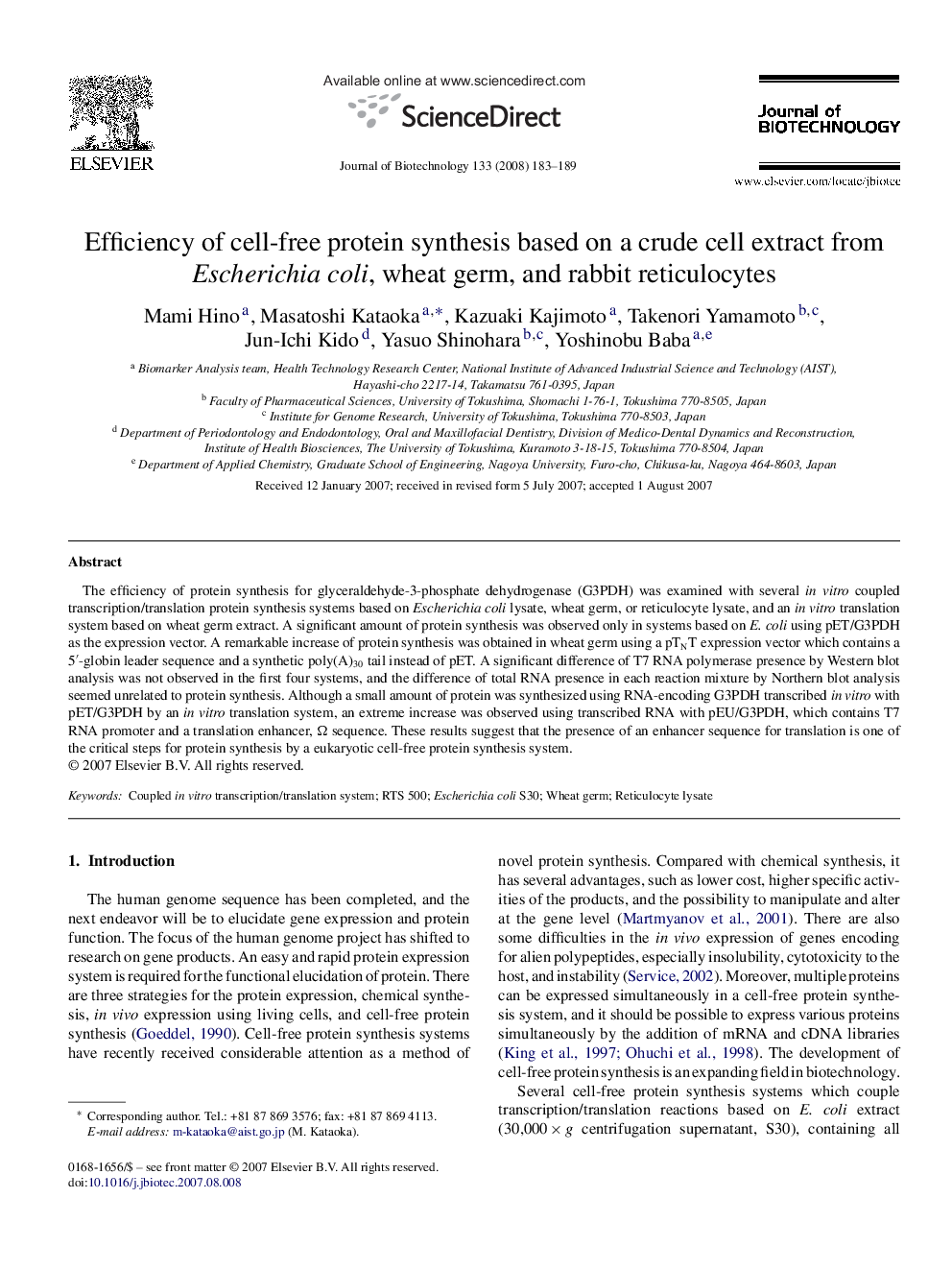| Article ID | Journal | Published Year | Pages | File Type |
|---|---|---|---|---|
| 24923 | Journal of Biotechnology | 2008 | 7 Pages |
The efficiency of protein synthesis for glyceraldehyde-3-phosphate dehydrogenase (G3PDH) was examined with several in vitro coupled transcription/translation protein synthesis systems based on Escherichia coli lysate, wheat germ, or reticulocyte lysate, and an in vitro translation system based on wheat germ extract. A significant amount of protein synthesis was observed only in systems based on E. coli using pET/G3PDH as the expression vector. A remarkable increase of protein synthesis was obtained in wheat germ using a pTNT expression vector which contains a 5′-globin leader sequence and a synthetic poly(A)30 tail instead of pET. A significant difference of T7 RNA polymerase presence by Western blot analysis was not observed in the first four systems, and the difference of total RNA presence in each reaction mixture by Northern blot analysis seemed unrelated to protein synthesis. Although a small amount of protein was synthesized using RNA-encoding G3PDH transcribed in vitro with pET/G3PDH by an in vitro translation system, an extreme increase was observed using transcribed RNA with pEU/G3PDH, which contains T7 RNA promoter and a translation enhancer, Ω sequence. These results suggest that the presence of an enhancer sequence for translation is one of the critical steps for protein synthesis by a eukaryotic cell-free protein synthesis system.
